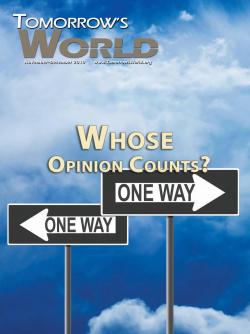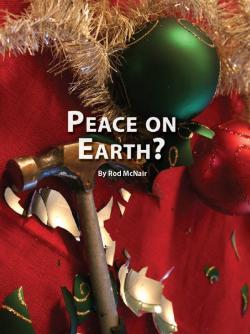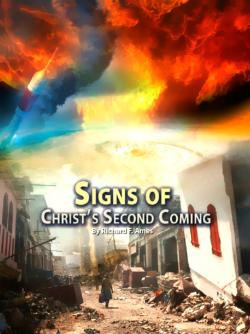Will Islam Transform Europe?
Forces of secularism are contending against voices of traditional religion, as Europe's economic and political stability are challenged by increasing numbers of Muslim immigrants. What does the threat of Islam portend for Europe's future?
From Caesar, to Constantine, to... Caliphate? What can Scripture and history teach us about Europe's future and the rise of Islam in the West?
Will radical Islam transform Europe? In the last two decades, Europe has gone through far-reaching changes, with the formation of the 27-nation European Union and the institution of a common currency, the euro. But the European Union is now in danger of fragmenting, and the future of its once-powerful currency has been questioned.
A number of EU nations' economies have been strained by runaway deficit spending. They have needed the other EU nations, chiefly Germany, to bail them out. But Germany has agreed to help only if a stronger central European government can have power over the fiscal purse strings of the profligate countries. The Germans do not want the fruits of their hard-earned productivity spent to support the fiscal excesses of other EU nations.
As a result, the EU continues to be divided along cultural, economic and nationalistic lines, causing great stresses within this remarkable community of nations. Europe is at a crossroads.
Forming the European Union was a long and arduous task, and Europeans accepted great changes in order to come together as the EU. But achieving their common destiny will require much more. What will it take to bring these quarreling nations together as a powerful federal union?
Against this backdrop, Europe is experiencing an unprecedented demographic change. Long a bastion of professed Christianity, the continent is becoming the home of increasing numbers of Muslim immigrants, who have fled the nations of their birth in the hope of sharing in Europe's prosperity.
What do these changes portend for Europe? Scripture tells us that even greater transformation is ahead in the relatively near future. But what is that transformation, and how will it occur?
History Matters!
Today's European culture did not appear out of thin air. A nation's culture comes largely from its history. The nations of Europe share a foundation dating back to the 4th century ad, when the emperor Constantine "Christianized" the Roman Empire. Since then, many European states have held Roman Catholicism as the state religion, though church-state relations have often been complex and contentious.
It would be difficult to overstate the influence of the Roman Catholic Church on European history. Pope John Paul II, who regarded the Roman Catholic Church as the glue that binds all of the diverse cultures of Europe together, proclaimed: "The history of the formation of the European Nations keeps abreast with their evangelization. Consequently, despite the spiritual crises that have marked the life of the Continent in our day, its identity would be incomprehensible without Christianity… Only a Europe that does not eliminate but rediscovers its Christian roots, will be able to take up the challenges of the third millennium: peace, intercultural and interreligious dialogue, the safeguarding of creation. All believers in Christ of the European West and East are required to make their own contribution through open and sincere ecumenical cooperation" (Regina Caeli, May 2, 2004).
Ecumenical cooperation? Not surprisingly, in the Vatican's vision of the ecumenical movement, all roads lead to Rome!
Pope Benedict XVI has magnified his predecessor's theme, asserting that the very idea of Europe would not exist in history or now except for professing Christianity. Before Cardinal Joseph Ratzinger was elevated to the papacy, he wrote, "Europe is not a continent that can be comprehended neatly in geographical terms; rather, it is a cultural and historical concept." (Europe Today and Tomorrow, p. 11). Benedict sees the roots of the idea of Europe as going back to the establishment of the Holy Roman Empire under Charlemagne in the 8th century ad. Charlemagne is often called "The Father of Europe."
An Ancient Dream
The Book of Daniel recounts King Nebuchadnezzar of Babylon having a dream of a great statue, and calling for Daniel to interpret it. Daniel, informed by God, obliged. "You, O king, were watching; and behold, a great image! This great image, whose splendor was excellent, stood before you; and its form was awesome. This image's head was of fine gold, its chest and arms of silver, its belly and thighs of bronze, its legs of iron, its feet partly of iron and partly of clay. You watched while a stone was cut out without hands, which struck the image on its feet of iron and clay, and broke them in pieces… You, O king… are this head of gold. But after you shall arise another kingdom inferior to yours [Medo-Persia]; then another, a third kingdom of bronze [Greece], which shall rule over all the earth. And the fourth kingdom [the Roman Empire and its revivals] shall be as strong as iron… And in the days of these kings the God of heaven will set up a kingdom which shall never be destroyed… Inasmuch as you saw that the stone was cut out of the mountain without hands, and that it broke in pieces the iron, the bronze, the clay, the silver, and the gold—the great God has made known to the king what will come to pass after this. The dream is certain, and its interpretation is sure" (Daniel 2:31–45).
Interestingly, Cardinal Ratzinger has some awareness of the significance of this imagery. Writing about the Europe of the Middle Ages, he noted: "The conceptual continuity …was assured by a theological interpretation of history: in connection with the Book of Daniel, the Roman Empire—renewed and transformed by the Christian faith—was considered to be the final and permanent kingdom in the history of the world in general, and therefore the association of peoples and states that was taking shape was defined as the permanent Sacrum Imperium Romanum [Holy Roman Empire]" (ibid., p. 13).
His analysis, of course, does not express the full meaning of this imagery. Yet in referring to the two iron legs of the Daniel 2 statue, the current pope shows that even the Roman Catholic Church has in the past recognized that the Roman Empire and its successor, the so-called "Holy Roman Empire," are pictured in Nebuchadnezzar's dream.
He also refers to the statue's two legs as constituting the idea of Europe, apart from its geography: "We can consider the rise of the Carolingian [Charlemagne's] Empire, on the one hand [the western leg], and the continuation of the Roman empire in Byzantium and its mission to the Slavic people, on the other [the eastern leg], as the true and proper birth of the continent of Europe…" (ibid., p. 17). In his analysis, the two "legs" of the empire constitute the foundation of the geographic idea of Europe. And he has a point.
Furthermore: "The two halves of the old Europe, before the modern era, had known essentially only one opponent that it had to confront in a life-or-death battle, namely, the Islamic world" (ibid., p. 22). Resisting Islamic conquest contributed significantly to the common identity of Europe, because it helped Europeans to think that "the continent of Europe" had a common fate in opposing the Caliphate that for more than a thousand years sought conquest in Europe.
Benedict also reminds us that this Roman Catholic monasticism, "had remained the essential guarantor not only of cultural continuity, but above all of fundamental religious and moral values, of man's awareness of his ultimate destiny; and as a force prior to and superior to political authority, it became the source of the rebirths that were necessary again and again" (ibid., p. 15).
To Benedict, "Europe" is inseparable from "Christianity"—the institution that, in his view, defined, developed and protected the continent, making it what it is today. He argues that Europe cannot long exist without it. Today, as the continent faces renewed challenge from Islam, many powerful Europeans are coming to the same conclusion, and they want the European Union to be defined constitutionally as "Christian."
The Crisis of Secularism
But there is an opposing movement in Europe: secularism. The French strongly favor a purely secular society, and they have a word for it: "Laïcité." The word corresponds to "Laicism" in English and both are derived from the Greek, laikos, meaning "of the people." A society organized under this model relegates religion strictly to private life, such that religious perspectives on conduct and morality must not be expressed in the public sphere. The laicist model is increasingly familiar to Americans, who see their courts restricting public displays of the Ten Commandments, and prohibiting prayer in public schools. Far from being religion-neutral, laicism sometimes manifests as an outright hostility to expressions of Judeo-Christian principles and practices that for centuries were taken as normative in the U.S. and Great Britain and other Western nations.
In Benedict's critique of laicism, he notes that the state, lacking any claim of religious authority, "claimed to be founded solely on reason and on its own intuitions. When confronted with the frailty of reason, these systems have proved to be fragile and have easily fallen victim to dictatorships; they survive, actually, only because parts of the old moral consciousness continue to exist, even without the previous social foundations, making possible a basic moral consensus" (ibid., p. 26.).
A state's laws express its understanding of morality. If a society judges it "wrong" to rob banks or run red lights, it establishes laws to punish those activities. A laicist state by definition cannot legislate religious morality, so the question becomes, "Whose morality will its laws reflect?"
The EU is officially a secular state. But, in a new religious environment where more and more Europeans seek to practice their Muslim faith, can all faiths be accommodated in a secular framework? Or will accommodating Islam undermine centuries of European values?
On the Road to Federal Unity
The tension between secular and Catholic impulses in Europe seems intractable. What can unite these two adversarial views? Can the EU ever be truly unified politically and economically with a central federal government? Before full unity can come, two barriers must be broken down.
The first issue is economic control. Until recently, EU nations have enjoyed fiscal autonomy within the EU framework. Individual nations' governments decided how they would tax their people and how they would spend the revenue. Because of the common currency, lenders assumed that there was an implicit EU guarantee of the sovereign debt of the various EU nations. As a result, economically weak nations such as Portugal, Italy, Ireland, Greece and Spain (collectively called the "PIIGS" nations) provided more generous social services and pension benefits than they could actually afford—which led to unsustainable deficits and debt levels. The impending sovereign defaults threatened not only the viability of the euro, but of the EU as well, until Germany—"the strongman of Europe"—pushed through a plan to finance a bailout in exchange for greater German influence over EU fiscal policy. Henceforward, there will be much more central review and control of the various EU nations' spending. The economic independence of the EU nations is being effectively broken down. Their common currency, the euro, is establishing a common economic fate for those within the Eurozone. But it took a major economic crisis to accomplish this. Further crises may accomplish more.
The second issue is nationalism. If you live in Paris, France, do you think of yourself as a Frenchman or a European? Should residents of Milan consider themselves Italian first and European second? The vast majority of EU citizens still cling to national identity above their identity as Europeans. The EU is a fiscal and political entity, not a national identity. This is not a new phenomenon. Before the U.S. Civil War of 1861–65, for example, many citizens thought of themselves first as residents of their own state (e.g. "Virginians"), and only secondarily as "Americans." It took a devastating war to convince millions of Americans that the individual states shared a common fate as one nation, and that their identity as Americans must come first.
What could overcome the nationalism and self-interest of the individual EU countries and unite them into a world-shaking powerhouse? What could spur the advocates of a "Christian Europe" to find common cause with the laicists who have sought a secular Europe? What can give the diverse peoples of the EU a sense that they share a common interest and a common fate?
The Islamic Threat
After Muhammad's death in 632ad, the Islamic Caliphate spread its rule across the Middle East and Northern Africa. Then, in 711ad, Islamic forces invaded Spain, conquered it and continued into much of France. Pillaging towards Paris, al-Rahman's Muslim army was finally stopped in France in 732ad by the Roman Catholic army of Charles Martel at the Battle of Tours, and European Catholicism was preserved.
Despite this setback, the Caliphate conquered and ruled large parts of Western Europe for centuries, including southern Italy and Sicily, as well as Spain and parts of France. Later, Muslim armies invaded Europe from the east, reaching as far as Vienna, Austria—seat of the Holy Roman Empire—which was attacked three times but never fell. Catholic forces at Granada, Spain, defeated the last Muslim stronghold in Europe in 1492. But not until 1718, upon Hungary's independence from Ottoman rule, did the Caliphate finally retreat from Eastern Europe, ending more than a thousand years of wars.
For nearly 300 years, Europe has not faced the threat of Muslim invasion—a threat that was instru-mental in the formation of a shared European identity throughout the Middle Ages. Now, however, there is again a perceived threat from Islamists, as Muslim extremists call for "holy war" and restoration of the Caliphate. Pope Benedict, like many other European leaders, believes that Europe will not survive without a return to the continent's cultural and religious roots. Is there any other threat, besides radical Islam, that can unite Europe's secularists and religionists?
A Look at the Future
The history of Europe can help us understand current events, but today's events can be illuminated further by the "future history" revealed in Bible prophecy. God tells us the news before it happens. As a result, people of faith can understand current events in the context of the completed panorama of history.
With a thousand years of invasions and occupations going back to the eighth century, Islam has a long history as a strategic threat to Europe. Unlike Americans, Europeans have suffered—on European soil—centuries of wars with Muslims. Europeans are slowly starting to realize that, given the history of jihad in Europe, a restored Islamic Caliphate in the Middle East would again pose a strategic threat to the continent.
Indeed, Islamists are openly reminding Europeans of this threat. Iranian President Mahmoud Ahmadinejad shocked the EU in 2006 when he publicly announced, "We have advised the Europeans that the Americans are far away, but you are the neighbors of the nations in this region. We inform you that the nations are like an ocean that is welling up, and if a storm begins, the dimensions will not stay limited to Palestine, and you may get hurt. It is in your own interest to distance yourself from these criminals [Israel]. This is an ultimatum" ("Ahmadinejad Does Europe," Wall Street Journal, October 24, 2006, p. A18). There is no evidence that President Ahmadinejad has changed his mind, and he may soon have nuclear weapons. To Ahmadinejad's south, many Muslims across the Arabian Peninsula and in North Africa are demanding a return to Islamic law. Ahmadinejad, a Shi'ite Muslim of Persian ancestry, is unlikely to galvanize the vast majority of Muslims, who profess the Sunni branch of Islam and share Arab ancestry. But the threat Ahmadinejad proclaims is real, portending a growing trend toward Muslim unity that Scripture reveals will lead to an end-time confederation of nations.
The prophet Daniel foretold that a conflict would heat up just before the return of the Messiah. In chapter 11 of Daniel, the prophet begins by recounting the history of ancient rulers who warred for control of the area around Jerusalem. Kings of the north contended against kings of the south. Then, from verse 40 on, Daniel's prophecy emphasizes "the time of the end"—our immediate future—in which a ruler to the south of Jerusalem will arise and become powerful. He will attack or "push" against a northern power, which Bible prophecy shows to be a European power—a successor to the Roman Empire.
Millions of Europeans are now fearful that Islam will transform their nations from within. As we have seen, however, Bible prophecy reveals that Islam's role will be to transform Europe from without—bringing it together to play a prophesied role in end-time events leading up to the return of the Messiah, Jesus Christ. Keep reading Tomorrow's World, as we watch these developments unfold and explain them in the light of Bible prophecy (Matthew 24:42).






